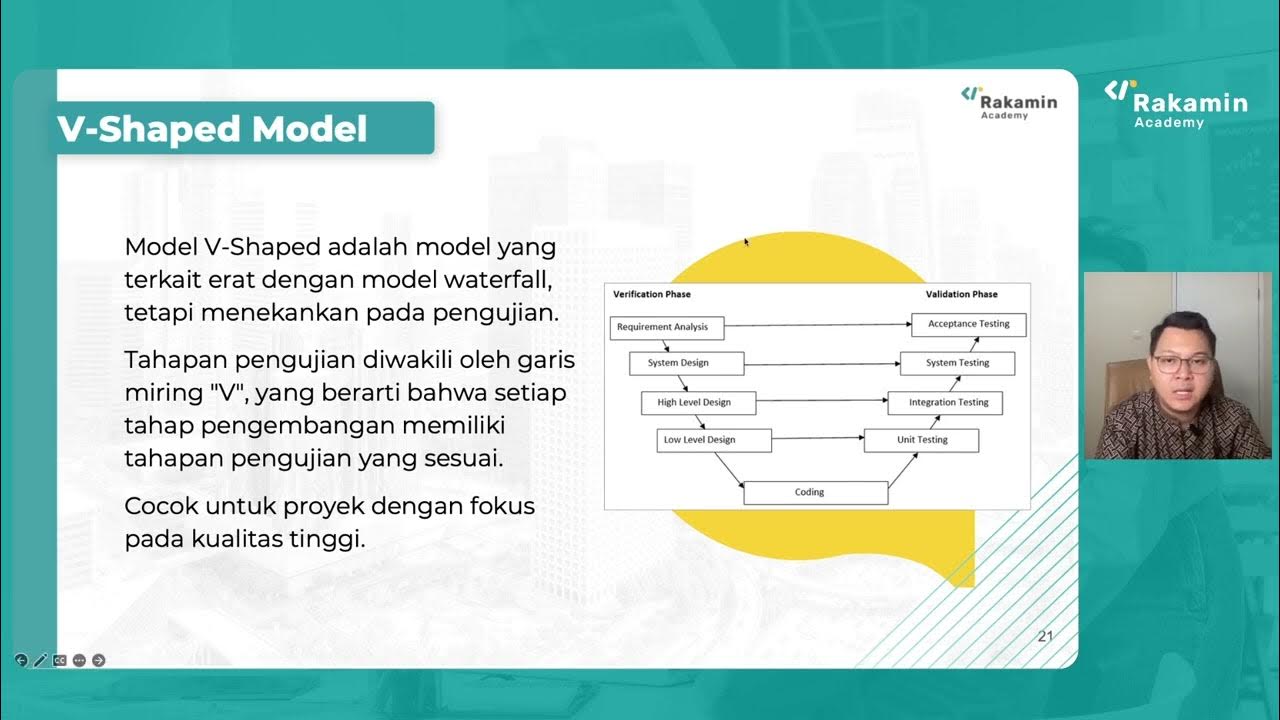Agile Onion
Summary
TLDRIn this video, the presenter explores the Agile Onion model developed by Simon Powers. The model consists of five layers: mindset, values, principles, practices, and tools/processes. Emphasizing the importance of starting with the fundamental layers—mindset, values, and principles—the presenter warns against rushing into tools and practices. The Agile Onion illustrates how mastering the outer layers can lead to less visible but more significant impacts on a team's culture and effectiveness. Viewers are encouraged to understand these foundational concepts for a successful Agile adoption.
Takeaways
- 😀 The Eel Onion model, created by Simon Powers, helps clarify common misconceptions in Agile adoption.
- 🌱 The model consists of five layers: mindset, values, principles, practices, and tools/processes.
- 🧠 The first layer, mindset, emphasizes the importance of a growth or Agile mindset as the foundation.
- 💡 The second layer focuses on values, which are expressed through the Agile Manifesto.
- 📜 Principles, the third layer, detail the cultural aspects of an Agile team.
- 🔧 Practices, the fourth layer, involve specific frameworks like Scrum, which include daily scrums and sprints.
- 🛠️ The fifth layer highlights the tools and technologies used, such as Figma and Git.
- 📊 Layers 1 to 3 (mindset, values, principles) are referred to as Agile fundamentals essential for successful adoption.
- 🚀 Understanding the outer layers helps in effectively reaching the inner layers of practices and tools.
- 📅 The journey of Agile adoption starts from the outer layers, emphasizing gradual mastery of mindset, values, and principles.
Q & A
What is the primary focus of the video?
-The video explores the concept of the 'Agile Onion,' a model created by Simon Powers, aimed at clarifying common misconceptions in adopting Agile methodologies.
What are the five layers of the Agile Onion?
-The five layers are Mindset, Values, Principles, Practices, and Tools & Processes.
What does the 'Mindset' layer represent?
-The 'Mindset' layer represents the foundational growth or Agile mindset that is crucial for effective Agile adoption.
How are 'Values' described in the Agile Onion model?
-The 'Values' layer encompasses the core values of Agile, which are detailed in the Agile Manifesto and reflect the principles guiding Agile practices.
What is the significance of the 'Principles' layer?
-The 'Principles' layer outlines the work culture and guiding principles derived from Agile values, serving as a framework for team collaboration.
Can you give examples of 'Practices' in the Agile Onion?
-Examples of 'Practices' include frameworks like Scrum, which involve daily scrums, sprints, and other Agile methodologies.
What role do 'Tools & Processes' play in Agile adoption?
-The 'Tools & Processes' layer includes technologies like Figma, Git, and VS Code that support the implementation of Agile practices.
Why is it important to start with the foundational layers of the Agile Onion?
-Starting with the foundational layers of Mindset, Values, and Principles is crucial because they establish a strong basis before moving on to Practices, Tools, and Processes.
How does the analogy of peeling an onion relate to Agile adoption?
-The analogy illustrates that as one moves deeper into the layers, the actions become less visible but have a stronger impact, emphasizing the importance of foundational understanding in Agile.
What key message does the presenter convey about the Agile journey?
-The key message is that the Agile journey begins with understanding Mindset, Values, and Principles, which is essential for successful adoption of Agile methodologies.
Outlines

Esta sección está disponible solo para usuarios con suscripción. Por favor, mejora tu plan para acceder a esta parte.
Mejorar ahoraMindmap

Esta sección está disponible solo para usuarios con suscripción. Por favor, mejora tu plan para acceder a esta parte.
Mejorar ahoraKeywords

Esta sección está disponible solo para usuarios con suscripción. Por favor, mejora tu plan para acceder a esta parte.
Mejorar ahoraHighlights

Esta sección está disponible solo para usuarios con suscripción. Por favor, mejora tu plan para acceder a esta parte.
Mejorar ahoraTranscripts

Esta sección está disponible solo para usuarios con suscripción. Por favor, mejora tu plan para acceder a esta parte.
Mejorar ahoraVer Más Videos Relacionados
5.0 / 5 (0 votes)






